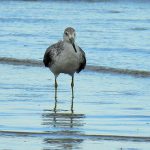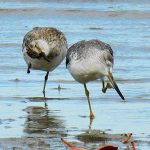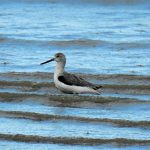NORDMANN'S GREENSHANK
The recent sightings of the Nordmann’s Greenshank in Australia mark a significant and exciting development for birdwatchers and conservationists alike. This rare visitor to Australian shores, primarily known from the coastal regions of East Asia, has sparked interest and excitement within the Australian birding community and beyond.
The Nordmann’s Greenshank has been recorded several times on the 80-mile Beach in Western Australia and, most notably, has been observed over-wintering at Cairns Esplanade in Queensland. An individual bird believed to be the same one has returned to Cairns Esplanade for four consecutive seasons, from December 2020 through to 2023. These sightings are particularly special given the bird’s endangered status and the rarity of such visits. The consistent return of this individual highlights the importance of Australia’s northern coasts as critical habitats for migratory birds.
In its temporary Australian habitat, the Nordmann’s Greenshank likely continues its typical feeding behavior observed in its native range. It forages in shallow waters along coasts, estuaries, and tidal flats, probing the mud with its slightly upturned bill to snatch up insects, small fish, crustaceans, and other aquatic invertebrates. The bird’s presence in areas like Cairns Esplanade underscores the richness and biodiversity of these ecosystems, providing a vital feeding ground for the Greenshank during its stay.
While the Nordmann’s Greenshank breeds in the taiga and forest-tundra zones of north-eastern Russia, the sightings in Australia occur outside the breeding season. These visits are part of the bird’s migration and overwintering strategy, seeking refuge in warmer climates during the northern winter. Thus, breeding behavior and activities would not be observed in Australia.
The life expectancy of the Nordmann’s Greenshank in the wild is difficult to ascertain, but similar wader species often live around 10 years, depending on environmental conditions and threats.



